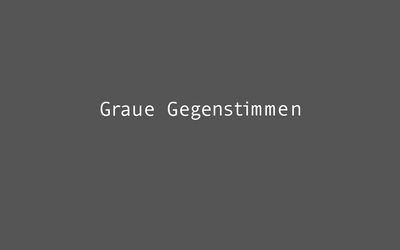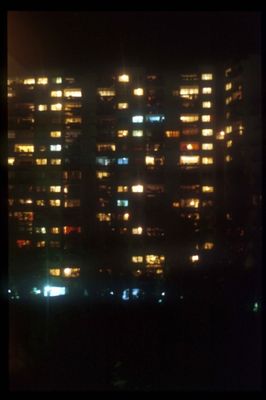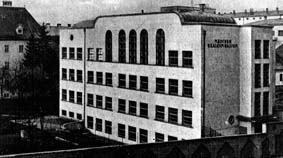Graue Gegenstimmen in schwarzer Zeit
 PLAY
PLAY
Andrea Sodomka über Graue Gegenstimmen:
 PLAY
PLAY
Alltag
 PLAY
PLAY
Die weite Welt oder: Das Radio unter dem Kopfkissen
 PLAY
PLAY
Andrea Sodomka über das Projekt:
 PLAY
PLAY
|
Graue Gegenstimmen in schwarzer Zeit 
A composition about shuffling cats, Josefsehen and inhaling English. Resistance takes place in secrecy, often in gray areas. Resistance has many forms, especially in everyday life. Small and large acts of resistance, passive and active resistance. They all cannot be clearly distinguished from each other, they merge into each other. Listening to the wrong music, wearing inappropriate fashions, preferring ways of life that did not correspond to the role of woman and mother of the National Socialist rulers, getting information from enemy broadcasters, all of this was life-threatening.. Countless women risked their lives by not following the rules of the Nazi regime, most of them unknown and unnamed. One woman, the writer Trude Dumser, representative of the many forms of resistance to the NS regime, recounts everyday life, breaking the rules, disobedience, refusal and the dangers involved.
Alltag  Remembrance of the resistance of women in Styria against National Socialism. Based on the publication "Die im Dunkeln sieht man doch, Frauen im Widerstand - Verfolgung von Frauen in der Steiermark" (Women in Resistance - Persecution of Women in Styria), Maki Stolberg, Miriam Raggam, Leo Kreisel-Strauss, Thomas Musil, Jogi Hofmüller, Rudolfine Lackner, Margret Kreidl and Reni Hofmüller commemorate the women published in this publication under the "Lexicon of Female Nazi Victims in Styria". The list is limited to women who were killed or died before the end of the Third Reich and who were known until the publication of the book. This list is not complete. Remembrance of the Resistance of Women in Styria against National Socialism What is remembrance? And what is forgetting? Can one choose what one remembers and what one forgets? Die weite Welt oder: Das Radio unter dem Kopfkissen  In the framework of the sound exhibition Wir waren ja nur Mädchen - Ursulinenschülerinnen erinnern sich (We were only girls - Ursuline schoolgirls remember), which took place in 1998 / 1999 at the OK Centrum for Contemporary Art, Linz, the artist duo Sodomka / Breindl developed twelve sound and light installations. Over 100 conversations with former Ursuline schoolgirls formed the foundation for the sound installation "we were only girls" in the OK Centrum for Contemporary Art in Linz. From 1945 to 1968, the building was a convent school - school and boarding school of the Ursulines. The sound installation opened a window into that time, exposing the part of the building's history when only women inhabited and used it. A multitude of small loudspeakers covered the traffic routes and former classrooms with a neural network of sound sources, making the building speak - with the voices of those who went to school there at that time. School, everyday life, experiences of those years became simultaneously present - to be experienced not as an image of a self-contained history, but as a wealth of complementary and often contradictory stories. The house has a memory and it has many voices. They were embedded in a room-filling soundscape, an acoustic "journey through time" through the years 1945 to 1968, generated from sounds that were heard on the radio during that time. "Die weite Welt oder: Das Radio unter dem Kopfkissen " was part of the sound exhibition, and excerpts from radio broadcasts and newsreels sounded from a stack of historical radios, reproducing both local and worldwide stories and events from the period between 1945 and 1968. In the radio mix, female interview partners could be heard commenting on the events. |
